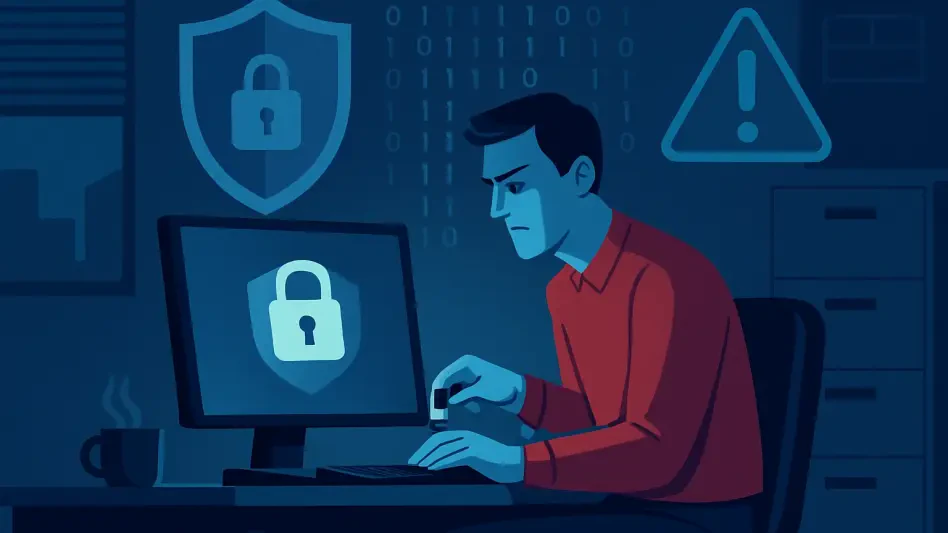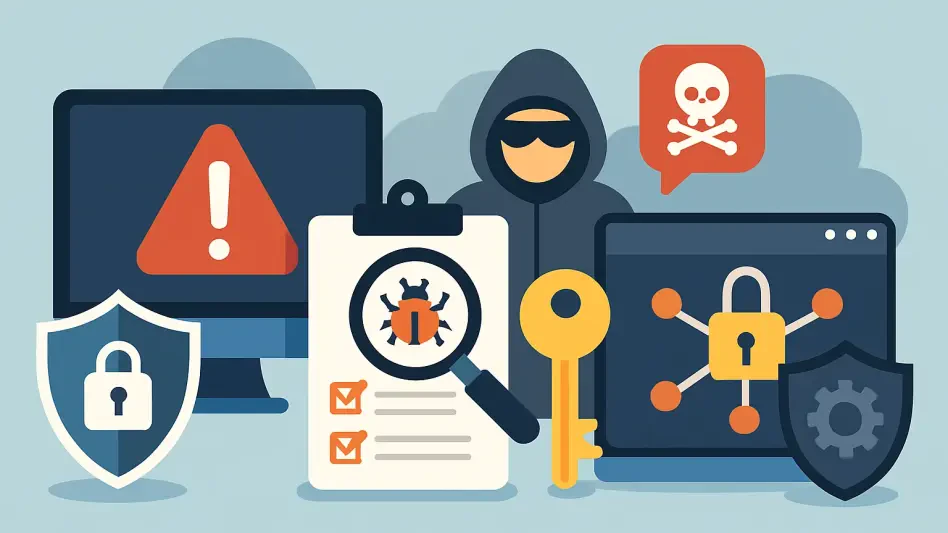The rise in cyber threats and data breaches has necessitated the evolution of advanced cybersecurity measures. One such measure that is proving to be crucial is digital forensics. This article explores how digital forensics is reshaping the landscape of cybersecurity and its importance in current and future frameworks for protecting digital environments.
The Growing Threat Landscape
Increasing Cybercrime Costs
Recent reports highlight substantial financial losses due to cybercrime. For instance, India witnessed staggering losses in 2024, driven by various cyber scams, with a significant contribution from stock trading frauds. Similarly, the United States recorded a notable rise in cybercrime complaints and financial losses, indicating a dramatic increase in cyber threats worldwide.
Cybercrime is becoming a costly endeavor for businesses and government entities alike. The FBI reported that in 2023 alone, the United States registered over 880,000 cybercrime complaints, marking a 10% increase from the previous year. These incidents resulted in an astronomical financial loss of 12.5 billion dollars, illustrating the escalating economic impact of cyber threats globally. Such figures underscore the growing importance of robust cybersecurity measures, including digital forensics, to mitigate these losses.
Predicting Future Threats
The escalation of cyber threats is not expected to subside. Predictions show potential losses reaching unprecedented levels, emphasizing the urgent need for advanced cybersecurity measures. This ongoing and intensifying threat landscape necessitates not only reactive but also proactive strategies in combating cybercrime. Digital forensics serves as a critical tool in this regard, providing both immediate investigation capabilities and long-term strategic advantages.
In-depth analysis of past cyber incidents allows experts to predict future threats with greater accuracy. Factors such as the sophistication of cybercriminal techniques and the increasing interconnectivity of devices contribute to the evolving threat landscape. By leveraging the insights gained through digital forensics, organizations can enhance their preparedness and resilience against potential attacks, making this field indispensable for future cybersecurity frameworks.
The Role of Digital Forensics in Cybersecurity
Evolution from Criminal Investigations
Initially rooted in criminal investigations, digital forensics has grown to become a critical part of cybersecurity. By collecting, analyzing, and preserving digital evidence, forensic experts can now scrutinize various cyber incidents, offering invaluable insights into breaches. This evolution has expanded the scope of digital forensics, allowing it to address a broader range of cybersecurity challenges beyond its traditional uses.
The field initially focused on aiding law enforcement in solving crimes, but its methodologies have since been adapted to address complex cyber threats. The collection and analysis of digital evidence help organizations understand how breaches occur, what vulnerabilities were exploited, and how similar incidents can be prevented in the future. This shift underscores the growing importance of digital forensics in modern cybersecurity strategies.
Proactive Security Measures
Digital forensics enables a proactive approach to cybersecurity. Beyond just investigating after an incident, it helps in preemptively identifying vulnerabilities and establishing stronger defense mechanisms, transforming the way organizations approach digital security. By examining historical data and identifying patterns and trends in cyber threats, digital forensics offers preventive measures that can be implemented to thwart future attacks.
This proactive stance is crucial in an environment where the threat landscape is constantly evolving. The insights gained from forensic analyses are used to refine security protocols, update software patches, and enhance overall cyber defenses. In this way, digital forensics transitions from a reactive measure to a fundamental component of proactive cybersecurity strategies, ensuring that organizations are better equipped to handle potential breaches before they occur.
Enhancing Incident Response
Quicker Detection and Mitigation
In the fast-paced world of cybersecurity, prompt detection and response are paramount. Digital forensic tools offer the ability to quickly analyze cyberattacks, providing critical details about the breach and facilitating faster recovery and mitigation efforts. The speed at which an organization can detect and respond to a cyber incident often determines the extent of the damage.
For instance, in ransomware cases, digital forensic tools can trace the origin of the malware, determine how it infiltrated the system, and assess the extent of the harm caused. By understanding the sequence of the attack and the techniques used by cybercriminals, forensic experts help organizations deploy countermeasures more effectively, leading to less damage and quicker recovery.
Tracing Malicious Activities
By tracing malware origins and understanding the sequence of cyberattacks, digital forensics helps organizations deploy timely countermeasures. This capability is especially crucial in combating ransomware and limiting the damage of infections. The analysis of system logs, network traffic, and other digital artifacts allows forensic experts to reconstruct the attack and identify the adversaries’ tactics, techniques, and procedures.
This detailed understanding of how an attack unfolded enables organizations to implement specific measures to prevent similar incidents in the future. It also aids in the identification and prosecution of cybercriminals, contributing to broader efforts to enhance global cybersecurity. By illuminating the path that attackers took, forensic analysis provides valuable insights that are essential for robust incident response and long-term security planning.
Advanced Defense Mechanisms
Leveraging Threat Intelligence
Digital forensics plays a pivotal role in threat intelligence by analyzing past cyber incidents to identify patterns and methods used by criminals. This intelligence fortifies existing security measures and aids in predicting and blocking future attacks. By creating a repository of knowledge about adversaries’ tactics, organizations can anticipate potential threats and take preemptive actions to mitigate risks.
Threat intelligence derived from forensic analyses also helps organizations understand the evolving strategies of cybercriminals. As threats become more sophisticated, staying ahead of potential attackers requires continuous learning and adaptation. Digital forensics provides the necessary insights to keep security measures up-to-date and aligned with current threat landscapes, making it an essential component of a comprehensive cybersecurity strategy.
Strengthening Defense Strategies
By utilizing insights from forensic analyses, organizations can bolster their security frameworks. This involves addressing identified vulnerabilities and implementing robust defense mechanisms against prospective threats. Forensic experts can highlight recurring weaknesses in network configurations, user behaviors, or security protocols that need to be addressed to enhance overall security.
Organizations can then take targeted actions such as revising policies, strengthening access controls, and conducting employee training to fortify their defenses. By continuously integrating findings from digital forensic investigations into their security posture, organizations can build a more resilient and adaptive defense strategy. This continuous improvement process is vital in maintaining robust security in the face of ever-evolving cyber threats.
Addressing Insider Threats
Identifying Malicious Behavior
Insider threats, whether intentional or accidental, pose significant risks. Digital forensic tools are instrumental in detecting and identifying these threats, providing the evidence needed to take corrective actions before substantial damage occurs. Insider threats can be challenging to detect, as they often involve individuals with legitimate access to sensitive information and systems.
Digital forensics helps in tracking and analyzing insider activities to identify anomalies that may indicate malicious or negligent behavior. By examining access logs, communication records, and other digital artifacts, forensic experts can uncover evidence of unauthorized data access, theft, or sabotage. This capability is crucial in mitigating risks and ensuring that insider threats are addressed promptly and effectively.
Enhancing Organizational Policies
Forensic analysis helps in understanding the root causes of insider threats, guiding organizations in revising policies, enhancing access controls, and ensuring comprehensive employee education to minimize inadvertent errors. By identifying patterns and common factors in insider incidents, organizations can implement more effective preventative measures to reduce the likelihood of such threats occurring.
This may include implementing stricter access controls, regular audits, and robust monitoring systems to detect and deter malicious activities. Additionally, educating employees about the risks and proper practices can help avoid unintentional actions that may lead to data breaches. Through a comprehensive approach that combines policy, technology, and education, organizations can significantly reduce the impact of insider threats on their security posture.
Prevention of Data Breaches
Early Detection of Anomalies
Detecting unusual network activities early is crucial in preventing data breaches. Digital forensics allows for the analysis of network traffic, file access patterns, and system logs, increasing the chances of mitigating potential breaches swiftly. By regularly monitoring and analyzing these digital footprints, organizations can identify anomalies that may indicate a breach or unauthorized access.
This proactive monitoring enables organizations to act quickly to contain and resolve potential breaches before they escalate. Early detection is a critical factor in minimizing the impact of cyber incidents, as it allows for prompt intervention and the implementation of countermeasures. Digital forensics provides the tools and expertise needed to identify these anomalies and take timely actions to protect sensitive data.
Strengthening Security Frameworks
Post-incident forensic investigations reveal the root causes of data breaches, such as system vulnerabilities or unsecured applications. This knowledge helps organizations enhance their security posture, ensuring resilient defense mechanisms. By understanding how breaches occurred, forensic experts can recommend specific actions to patch vulnerabilities and improve overall security.
This iterative process of continuous improvement based on forensic insights ensures that organizations are better prepared to prevent future breaches. Implementing the lessons learned from past incidents strengthens security frameworks and builds resilience against evolving threats. Digital forensics thus plays a vital role in helping organizations maintain robust security in a dynamic and challenging cyber environment.
Legal and Compliance Benefits
Supporting Regulatory Compliance
Digital forensics is essential in meeting regulatory requirements by providing necessary evidence for identifying data breaches and ensuring proper containment. It also assists in legal investigations to track and prosecute cybercriminals. Compliance with regulations such as GDPR, HIPAA, and other data protection laws requires organizations to demonstrate due diligence in protecting sensitive information.
Forensic analyses provide the documentation and evidence needed to show that organizations have taken appropriate measures to secure data and respond to breaches promptly. By facilitating compliance with legal and regulatory standards, digital forensics helps organizations avoid penalties and enhances their reputation for responsible data management.
Providing Evidentiary Support
Forensic tools can detect crimes like fraud and intellectual property theft, producing irrefutable evidence that supports legal proceedings. This leads to successful prosecutions and the enforcement of justice. The ability to gather and present digital evidence in a court of law is crucial in holding cybercriminals accountable and deterring future offenses.
Digital forensics provides the tools and methodologies needed to uncover and document criminal activities, ensuring that the evidence is admissible and credible. This capability not only supports legal actions but also strengthens the overall cybersecurity posture by demonstrating that organizations can effectively respond to and mitigate cyber threats. By integrating forensic practices into their security strategies, organizations can enhance their ability to protect their assets and enforce accountability.
Utilizing AI and ML in Digital Forensics
Automating Investigations
The adoption of AI and ML technologies in digital forensics facilitates the automation of investigations. These technologies enhance the accuracy of detection and allow for the real-time analysis of vast amounts of data. The integration of AI and ML enables forensic experts to quickly identify patterns and anomalies that may indicate cyber threats, significantly improving the efficiency and effectiveness of their investigations.
Automation also reduces the likelihood of human error, ensuring more consistent and reliable analyses. By leveraging advanced algorithms, AI and ML can continuously learn and adapt to new threats, providing ongoing improvements to forensic capabilities. This technological synergy between digital forensics and AI/ML represents a significant advancement in the field, enhancing the ability to respond to cyber incidents with greater precision and speed.
Predicting and Preventing Attacks
The surge in cyber threats and data breaches has made it imperative to develop advanced cybersecurity measures. One particularly critical component emerging in this field is digital forensics. This discipline involves the investigation of cyber incidents, uncovering traces left behind by malicious activities which is essential for both identifying perpetrators and understanding their methods. By meticulously analyzing digital evidence, experts in digital forensics help organizations bolster their defenses, preventing future attacks and ensuring information security. As cyber threats become more sophisticated, digital forensics continues to play a pivotal role, making it an indispensable part of both current and future strategies for safeguarding digital ecosystems. This article delves into the transformative impact digital forensics has on cybersecurity, emphasizing its growing significance in fortifying digital environments against intrusions and ensuring data integrity in an increasingly interconnected world.








